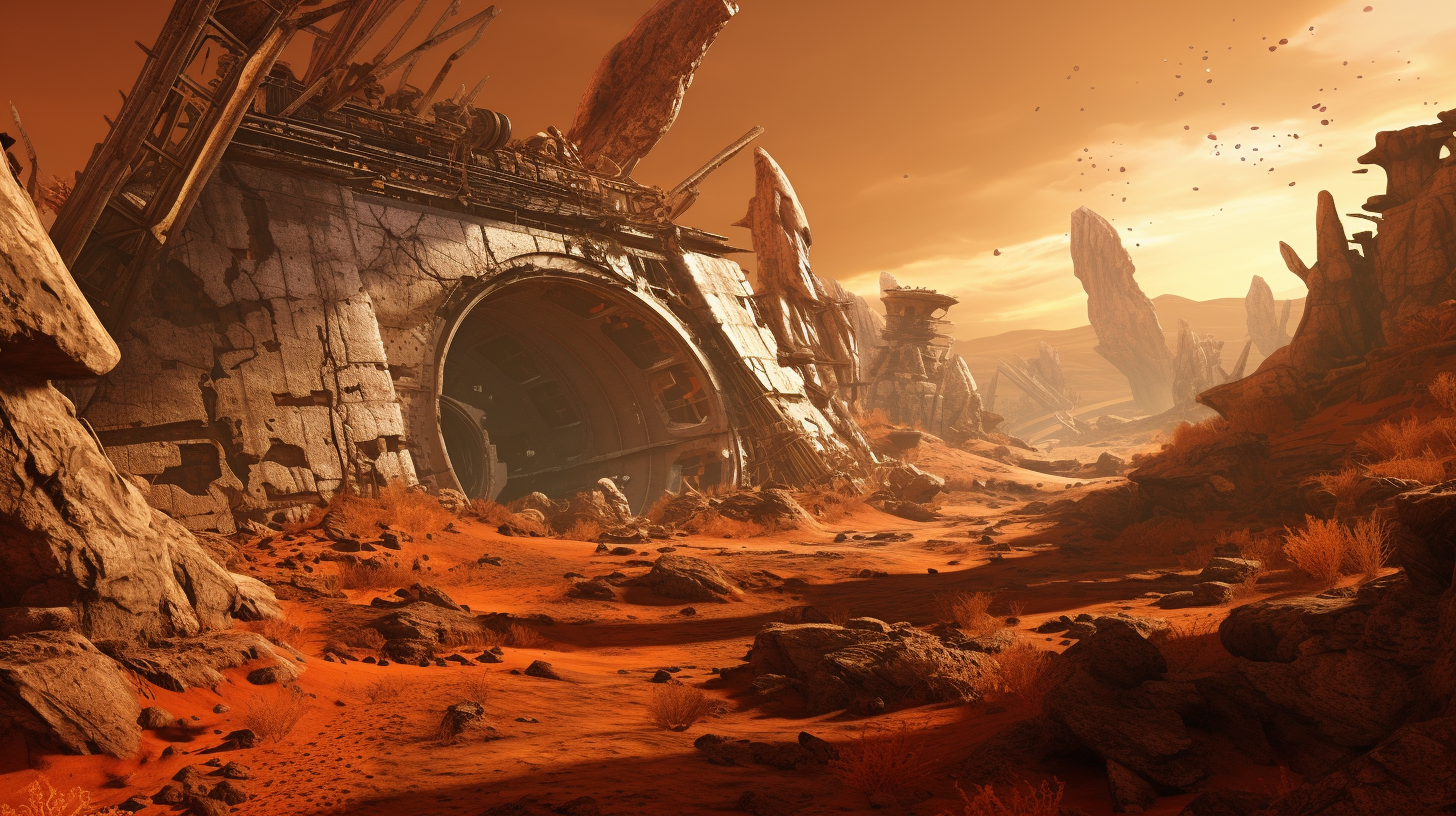In the vast expanse of space, the curiosity of humans knows no bounds. Our thirst for knowledge about the cosmos has led us to distant planets, and one of our most remarkable missions has been the Mars Curiosity rover. Launched on August 6, 2012, this robotic explorer has captured our imagination and fueled speculation about the Red Planet. While it hasn’t solved the mysteries of the universe, it has certainly raised intriguing questions about Mars and its potential hidden secrets.
On February 25, 2014, a significant event occurred in the world of space exploration. Five hundred and fifty-four solar days after its dramatic landing on Mars, the Curiosity rover transmitted a series of high-resolution panoramic photographs of the Martian landscape back to Earth. Among these images, something unexpected emerged, something that has intrigued amateur archaeologists and space enthusiasts alike.
In the midst of the rugged Martian terrain, specifically at a location known as the Dingo Gap, observers noticed an unusual formation. To the naked eye, it appeared to resemble a statue with a distinct human-like shape. This discovery, however, was just the tip of the iceberg. As we delved deeper into the rover’s photographic archives, a plethora of Earth-like objects began to emerge. Among them were a sarcophagus, a Buddha statue, and even a cross.
These findings raised eyebrows and sparked numerous discussions among space enthusiasts and researchers. Could these objects be remnants of a long-lost Martian civilization? Was there once a thriving society on Mars that left behind these intriguing artifacts?

The concept of ancient civilizations on Mars is not a new one. In fact, ancient astronaut theorists have been considering the possibility of such artifacts since the first images were beamed back from the Mars Viking mission in 1979. However, skepticism from NASA officials has often overshadowed these claims. They argue that our minds are merely playing tricks on us through a phenomenon called pareidolia, where we perceive familiar patterns in random shapes, much like seeing figures in clouds.
Despite NASA’s dismissive stance, some imaging experts remain unconvinced that these Martian objects can be explained away so easily. Joe White, with 25 years of experience in image restoration, has dedicated his efforts to uncovering the mysteries hidden within the rover’s photographs. He contends that the rover images, though often resized and altered by NASA, still contain intriguing details that deserve closer examination.
One of the most compelling pieces of evidence is the clear depiction of intricate facial features on the “statue” found at the Dingo Gap. White points out the well-defined eyes, nose, and mouth, as well as what could be an ear. The elongated conehead shape of the figure has also drawn attention. While the statue may appear damaged and partially buried, its resemblance to certain sculptures found on Earth, particularly in Central and South America, is striking.
Could these findings be indicative of a long-lost Martian civilization that shared similarities with ancient civilizations on our own planet? Could there be a connection between the structures on Mars and those here on Earth? These questions continue to fuel the imaginations of ancient astronaut theorists.
The parallels between the structures on Mars and known Earthly landmarks are uncanny. Pyramids, standing stones, Stonehenge-like formations, and even a Sphinx-like structure have all been identified in the Martian landscape. The “City” around Cydonia stands out, featuring a massive pentagonal pyramid and other pyramidal structures. Some theorists have even noted that the layout of these pyramids mirrors the constellation of the Pleiades, a phenomenon also observed in certain ancient architectural monuments on Earth.
Of course, mainstream science remains skeptical, insisting that these Martian structures cannot possibly be of artificial origin. However, history has shown us that what was once deemed “impossible” often turns out to be plausible with time and further exploration. The discovery of water on Mars is a prime example of this.
As we continue to unlock the secrets of Mars, we find ourselves confronted with intriguing mysteries that challenge our understanding of the cosmos. The questions surrounding these Martian artifacts persist: What civilization might have built them, and what fate befell them? While we may not have all the answers just yet, the quest for knowledge remains a driving force in our exploration of the universe, keeping our imaginations soaring among the stars.

22 thoughts on “Exploring the Mars Rover Discoveries: Clues to a Lost World”
Comments are closed.